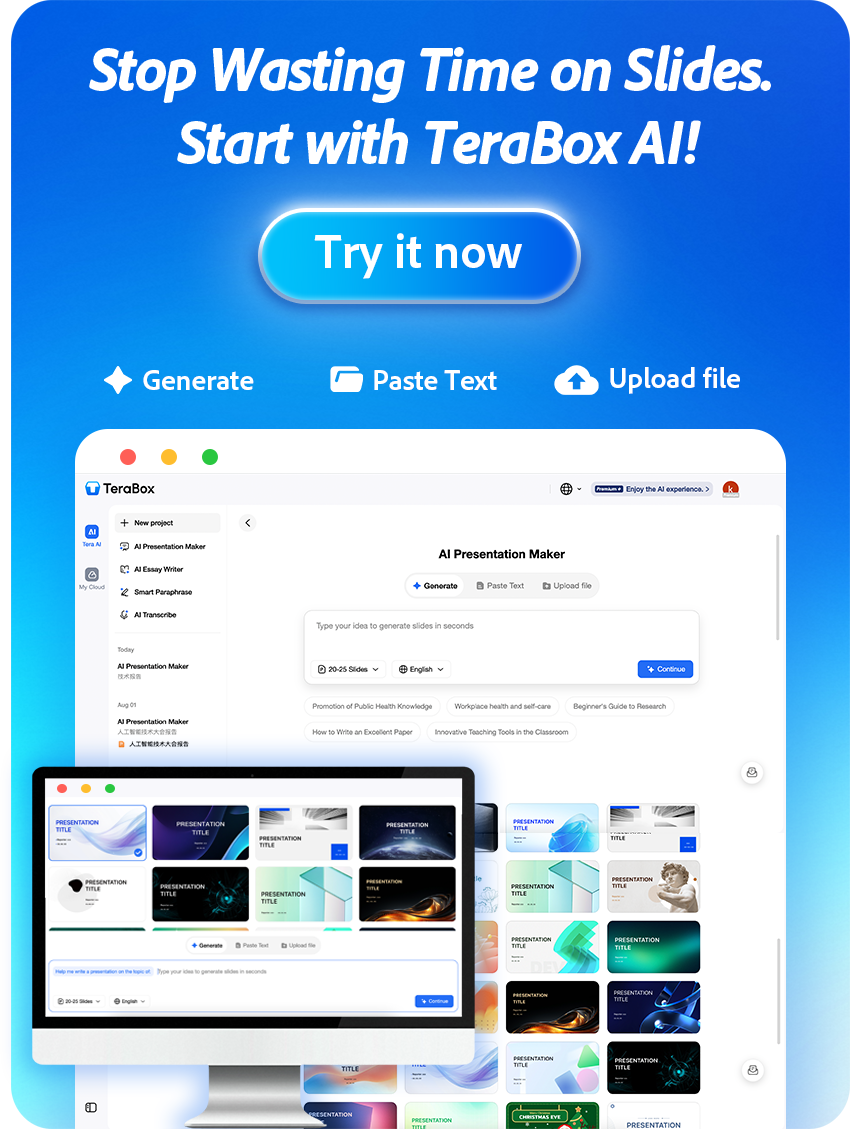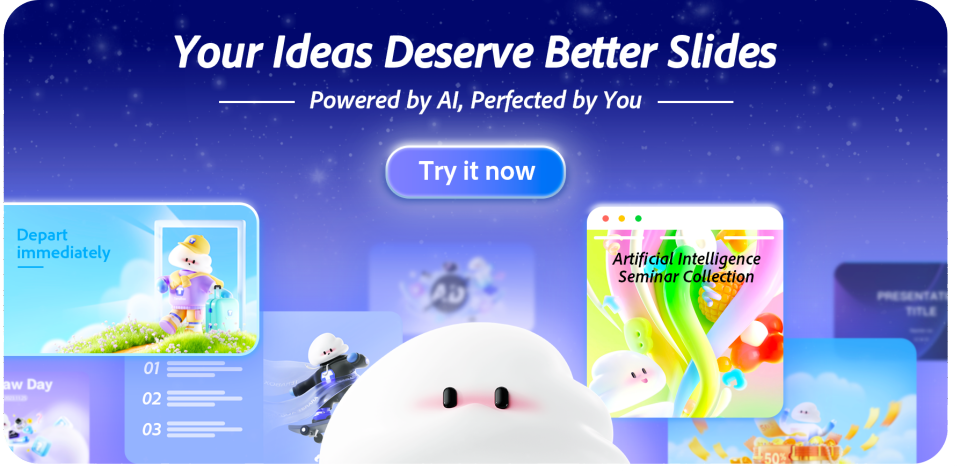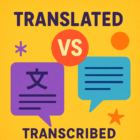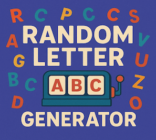Tired of strict filters, downtime, and canned responses? If you want more creative freedom and realistic roleplay, the demand for Character AI alternatives has never been higher.
Uncensored and creative chat is driving a wave of new platforms that let users build deep personalities, fine‑tune tone and memory, and enjoy freer conversations. Whether you’re a writer, roleplayer, developer, or just someone who wants more expressive characters and richer storytelling, these alternatives open up new possibilities.
This guide highlights the best free and uncensored AI chat platforms in 2025 and breaks down each platform’s features, interface, and access options so you can pick the right fit. Looking for a free ai character generator or just a more natural conversation with your favorite characters? Jump to the Top 10 list or read on to learn how to choose, set up, and get the most out of these alternatives.
Why Look for a Character AI Alternative?
Many users are switching to other services because they want a more personalized, less restricted AI experience. While Character AI helped popularize AI-driven character interactions, real-world limits — from conversation filters to login requirements — push people to explore other options that offer greater flexibility, stability, and control.
Below are the most common reasons people hunt for character alternatives — a quick checklist to help you decide if it’s time to switch:
1) Conversation filters and limited freedom
Strict filters can make conversations feel sanitized and repetitive. Users who want to roleplay, explore edgy storytelling, or simply have more natural talk find filters frustrating when they block legitimate topics or creative tones. Practical example: a roleplayer trying to reenact a tense drama scene may repeatedly hit moderation blocks that strip emotional detail from the conversation.
2) Downtime and server instability
Unreliable servers interrupt sessions and break immersion. For people who use AI characters for long-form roleplay or ongoing stories, downtime means lost continuity and wasted time. Check recent community reports or status pages before committing to a platform if uninterrupted interactions matter to you.
3) Character creation restrictions
Some platforms restrict how much you can customize a character’s backstory, personality, voice, or memory. If you want deep, consistent characters — with persistent memory and nuanced personalities for writing or roleplay — these limits are a dealbreaker. Alternatives with richer creation tools let you tweak traits, dialogue style, and remembered context so characters behave predictably across sessions.
4) Data privacy and login issues
Login requirements, data retention, and unclear privacy policies make some users wary. Creators who want anonymous access, local data control, or transparent retention policies will look for platforms that offer better privacy settings or anonymous modes to protect their conversations and identity.
5) Desire for more realistic or NSFW-friendly chats
Some users want realism — emotionally believable responses, adult themes, or mature roleplay — that a heavily moderated platform won’t permit. While responsible platforms must enforce legal and safety limits, certain alternatives give more leeway for adult content or realistic dialogue under clearer, user-controlled moderation settings. Always check the platform’s TOS and local laws before using NSFW features.
In short, the search for character alternatives is driven by a need for more freedom in conversations, better uptime, deeper character customization, and stronger privacy or access options. If those priorities sound familiar, exploring other platforms could improve your interactions and overall experience.
- More freedom in conversations and tone
- Improved server stability and uptime
- Enhanced character customization and memory
- Better privacy choices and anonymous access
- Options for more realistic or NSFW-friendly roleplay (where legal and allowed)
Ready for alternatives? See our Top 10 free options below and use the checklist above to pick the best platform for your roleplay, writing, or casual chat needs.
Top 10 Free Character AI Alternatives in 2025
Character AI alternatives have multiplied in 2025, giving users more options for realistic roleplay, uncensored conversations, and richer character creation. If you’re hunting for a character ai alternative free, this curated Top 10 list focuses on platforms that offer meaningful free tiers or generous freemium access so you can test them without paying up front.
Below are ten notable character alternatives (short profiles follow). Each entry includes a brief overview, key features, pros & cons, and who it’s best for — so you can quickly pick a platform that matches your storytelling style, roleplay needs, or development goals.

1. Chub.ai
- Overview: Known for flexible character creation and relatively permissive moderation controls.
- Key features: deep customization, persona memory, rapid responses, basic image generation.
- Pros: Powerful customization options and lively conversations; free tier available.
- Cons: Community moderation varies; advanced features behind paywall.
- Who it’s best for: Roleplayers and writers who value voice and personality detail.
2.Janitor AI
- Overview: Lightweight, user-friendly interface built for quick setup and roleplay sessions.
- Key features: easy character import/export, templates, adjustable tone and memory controls.
- Pros: Fast onboarding and good for episodic stories; generous free plan.
- Cons: Limited advanced features; simpler than more customizable platforms.
- Who It’s Best For: Beginners or casual storytellers seeking quick, engaging roleplay experiences.
3.WallAI
- Brief Overview: Immersive multi-character AI chat focused on scene management and scripted storytelling.
- Key Features: Multi-bot interactions, scene management, conversation branching tools.
- Pros: Excellent for group storytelling and structured roleplay; developer customization supported.
- Cons: Advanced branching features require payment; learning curve for complex setups.
- Who It’s Best For: Writers and groups creating multi-character, scripted roleplay scenarios.Overview: Focused on immersive conversation with tools for multi-character scenes.
4.Replika (modded setups / forks)
- Brief Overview: Companion-style chat AI, with community forks offering looser moderation and expanded capabilities.
- Key Features: Deep emotional modeling, day-to-day memory, personalization.
- Pros: Strong personality-driven conversations; good for long-running character arcs.
- Cons: Official Replika limits NSFW content; community forks vary in reliability.
- Who It’s Best For: Users seeking emotionally rich, personality-focused AI companions.
5.Character.AI (community tools and third-party wrappers)
- Brief Overview: Community-built extensions increase flexibility beyond official filters.
- Key Features: Large character libraries, collaborative creation, rapid responses.
- Pros: Huge character ecosystem; fast, dynamic chat.
- Cons: Official policies may restrict some content types.
- Who It’s Best For: Creators looking for extensive character variety and collaborative tools.
6.HoloAI / HoloKit variants
- Brief Overview: Interactive storytelling tools with persistent memory and persona management.
- Key Features: Long-term memory, scene saving, adjustable tone and voice.
- Pros: Excellent for serialized storytelling; supports complex narratives.
- Cons: Requires some learning to maximize features.
- Who It’s Best For: Writers producing serialized stories or deep narrative content.
7.AI Dungeon / Latitude-based forks
- Brief Overview: Open-ended text adventures originally built for improv storytelling.
- Key Features: Open sandbox prompts, world-state memory, multiplayer modes.
- Pros: Highly flexible for creative writing and free-form roleplay.
- Cons: Moderation and quality vary with backend models.
- Who It’s Best For: Creative writers and roleplayers wanting open-ended scenarios.
8.Bot Libre
- Brief Overview: Open bot platform supporting scripting, embedding, and AI voice options.
- Key Features: Bot scripting, exportable bots, integration with websites/apps, voice options.
- Pros: Great for developers; robust customization; suitable for communities.
- Cons: Interface can feel dated; steep learning curve for advanced scripts.
- Who It’s Best For: Developers and communities needing highly customizable AI bots.
9.Freenom-style self-hosted models (Local LLMs)
- Brief Overview: Locally-run open AI models allowing full control over moderation and memory.
- Key Features: Full filter control, privacy, customizable parameters.
- Pros: Maximum privacy and customization; ideal for adult or NSFW setups.
- Cons: Requires technical knowledge and computing resources.
- Who It’s Best For: Tech-savvy users or creators requiring full control over AI environment.
10.Smaller niche platforms & experimental tools
- Brief Overview: Emerging platforms for niche roleplay, audio characters, or integrated art + chat experiences.
- Key Features: Voice acting, integrated art generation, specialized genre templates.
- Pros: Innovative features; targeted communities; experimental tools.
- Cons: Limited user base; beta instability.
- Who It’s Best For: Early adopters, experimental storytellers, or creators exploring niche AI capabilities.
Notes for readers: availability, free-tier limits, NSFW policy, and image generation support vary widely — verify each platform’s current terms before assuming features or permissiveness. For a fair comparison, check: free-tier message limits, memory persistence, NSFW policy, interface quality, and developer tools.
Quick comparison checklist (what to check before signing up): free tier limits, persistent memory, NSFW policy, image generation, export/options for characters, and community support.
Try these for free: pick 2–3 platforms from the list above (one lightweight, one advanced, one self-hosted/local) and run the same sample prompt on each to compare character voice, memory, and overall experience.
How to Choose the Right Character AI Alternative
Picking the best character AI alternative means matching platform features to the way you want to use characters — for roleplay, storytelling, writing, development, or adult experiments. Focus on measurable criteria so you can compare platforms objectively instead of relying on hype.
Use this checklist of key questions to evaluate any platform:
- Customization & personality controls: Can you tweak character traits, dialogue style, and voice? Does the platform offer fine-grained customization options (e.g., persona sliders, behavior prompts, or personality presets)?
- Memory & context: Does the platform support persistent memory or session context? If your stories depend on continuity, check how long memory lasts and whether you can edit or export it.
- NSFW policy & moderation: If you need mature or adult-friendly chats, verify the platform’s NSFW policy and moderation controls. Are there user-controlled filters or clear community rules? Always comply with local laws and the platform’s TOS.
- Free vs paid features: What does the free tier include (daily messages, character slots, image generation tokens)? Compare concrete limits rather than assuming “free” equals usable.
- Interface & setup: Is the UI intuitive for quick setup, or does it target developers (scripting, API access)? Look for features like templates, scene builders, or import/export for characters.
- Privacy & access: What login options exist (email, social login, anonymous)? Check data retention, export options, and whether you can self-host or run a local model for maximum privacy.
- Responses & control: How natural are the responses? Can you control tone, verbosity, or response style? Test with the same prompt across platforms to judge voice and consistency.
- Developer & integration tools: If you’re building experiences, look for APIs, webhooks, bot embedding, and customization via scripts or plugins.
- Community & support: Is there an active community, templates, or official support to help you troubleshoot moderation hits or setup issues?
Practical metrics to compare (write these down when testing): daily free messages, max memory size or duration, number of free character slots, image-generation availability (tokens or limits), API request limits, and NSFW policy classification.

Example comparison table to build (replace placeholders with verified data):
| Platform | Customization | Memory | NSFW Policy | Free Tier |
|---|---|---|---|---|
| Chub.ai | High (persona sliders) | Session + persistent notes | Flexible / community-moderated | Free tier with limits |
| Janitor AI | Medium (templates) | Session memory | Restricted | Generous free plan |
| 4WallAI | High (multi-character scenes) | Long-term memory | Varies | Free + paid upgrade |
Privacy mini-checklist: can you sign up anonymously, does the platform export conversation data, is user data retained indefinitely, and are third-party integrations documented? If privacy matters, prioritize platforms with clear policies or self-hosting options.
Quick-pick guidance (fast decisions):
- Best for roleplayers: Platform with strong memory, persona controls, and flexible tone settings.
- Best for writers: Platforms with scene management, export options, and reliable continuity.
- Best for NSFW-friendly experiments: Platforms that explicitly document permissible adult content and offer user moderation controls (ensure legality first).
- Best for developers: Platforms with APIs, scripting, and embedding support.
Final tip: don’t judge a platform by a single session. Run a 3–5 day test: create a character, push its memory, and run the same narrative across platforms to compare voice, control, and overall experience. That will reveal which alternative truly fits your use case.
Step-by-Step: How to Start Chatting with a Character AI Alternative
You can be up and running with a character AI alternative in minutes. Most platforms are designed for quick setup, but a few smart steps up front will make your conversations, roleplay, or storytelling sessions far better.
Step 1: Choose your platform
Pick a platform that matches your goals — lightweight interfaces for quick chats, deep customization for persistent characters, or self-hosted options for maximum privacy. Consider the platform’s features, free-tier limits, and whether it supports persistent memory, image generation, or developer APIs.
Step 2: Sign up
Create an account using the method you prefer: email, Google/social login, or anonymous (if the platform supports it). Note any verification requirements (phone, age check) and regional restrictions before you sign up.

Step 3: Create or customize your character (don’t skip this)
Before your first conversation, set the character’s core attributes: name, personality, backstory, tone/voice, and memory behavior. Use persona sliders or short prompts if available. Example setup (2–3 lines): “A grizzled detective, sharp-witted, sarcastic but loyal; remembers clues between sessions; speaks in short noir sentences.” This simple setup dramatically improves response consistency and makes characters feel alive across chats.
Step 4: Set safety & moderation preferences
Check and adjust content filters, NSFW toggles, and privacy settings. If you plan to test adult themes, confirm the platform’s NSFW policy and age-gating rules. Always follow local laws and the platform’s Terms of Service.
Step 5: Start chatting — use a strong opening prompt
Kick things off with a short, vivid scene starter that includes role, tone, and immediate goal. Examples:
- Short prompt (fast start): “You are an old sea captain. Begin with a gruff greeting and mention the storm off port.”
- Medium prompt (more context): “You’re Mira, a cynical bar owner with a secret past; tonight a stranger walks in with a bloodied note — react and ask questions.”
- Long prompt (persistent roleplay): “You are Alistair, a charming con artist who remembers prior scams. Keep a calm, persuasive tone, and recall that you owe money to Rina in chapter two.”
Run the same prompt on 2–3 platforms to compare voice, memory handling, and responses — this is the fastest way to see which alternative fits your needs.
Settings to tweak before long sessions
- Tone/verbosity: set whether responses are brief or flowery.
- Memory persistence: enable or disable long-term memory and decide what gets saved.
- Response control: set safety levels, profanity filters, and content style.
- Interface: choose chat layout, voice output (if available), and mobile/desktop mode.
Mobile vs desktop and tooling notes
Many platforms offer both web and mobile UIs; some advanced tools (scene editors, scripting, API access) are easier on desktop. If you plan to build or integrate bots, confirm API keys, webhook support, and export/import options before committing.
Safety & legal reminder
If you intend to explore NSFW or adult content, ensure the platform explicitly permits it and that you comply with age-verification and local laws. Report abusive or illegal content through the platform’s reporting features.
Try this 3-minute setup: 1) Pick a platform (lightweight + one advanced), 2) Create a character with a 2–3 line persona + memory rule, 3) Send a strong opening prompt and note how the character’s voice and memory behave. Repeat across platforms to compare experience and pick the best fit.
Following these steps will get you from signup to immersive conversations fast — whether you want casual chats, deep roleplay, or to prototype an interactive story.
Tips for Getting the Most Out of AI Character Chats
Great AI character chats aren’t accidental — they come from good setup, thoughtful prompting, and sensible use of platform features. Below are practical, testable tips to improve character voice, memory, and the overall storytelling experience across platforms.
Build a compact persona (2–4 sentences + 3 behavior bullets)
Start with a short persona that states role, core traits, speaking style, and one or two memory rules. Example:
- Persona (2–4 lines): “You are Lira, a sharp-tongued librarian who hides a secret knack for sleight-of-hand. Speak wryly, use short sentences, remember the names and one secret per user session.”
- Behavior bullets: “Always ask one follow-up question; never break character; recall past session clues.”
Prompt templates: short, medium, long
Use different prompt lengths depending on the scene:
- Short (fast start): “You are a jovial tavern owner — greet the player and offer a local rumor.”
- Medium (context + goal): “You are Mara, a retired knight running an inn. Tonight, a stranger brings a cipher — react and try to decode a clue.”
- Long (persistent roleplay): “You are Kai, a con artist who remembers previous scams and favors. Keep a casual, persuasive voice. Remember the debt to Rina and mention it in scene three.”
Settings to tweak before long sessions
- Tone / verbosity: set to concise or elaborate depending on the character’s voice.
- Memory persistence: enable session or long-term memory where available; decide what should be saved (names, plot points, secrets).
- Filters & safety: set NSFW toggles and profanity levels according to the platform’s TOS and your local laws.
Troubleshooting moderation hits
If the platform blocks a prompt, don’t abandon the idea — rephrase. Strategies:
- Shift from explicit language to descriptive, suggestive wording.
- Break a scene into smaller beats (ask the character a question instead of asking for an explicit scene description).
- Use system-level persona instructions to set tone and boundaries rather than embedding explicit content in the prompt.
Using AI image generation to enhance storytelling
If the platform supports images, pair a generated image with short narrative beats: an opening image for scene-setting, then a 1–2 line caption to anchor subsequent dialogue. Remember to verify copyright and model source constraints before publishing images.
Preserve and export your work
Save important conversations and export character definitions where possible. Tips:
- Export character configs or back them up in a local file.
- Save key conversation logs or scene snapshots after each session.
- If you self-host, ensure regular backups of model state and conversation databases.
NSFW responsibility and legal checklist
If you plan to explore adult content, do so responsibly:
- Confirm the platform explicitly allows mature content and has age-gating in place.
- Follow local laws and community guidelines — don’t request or generate illegal content.
- Report misuse or abusive content via the platform’s reporting tools.
Advanced tips for consistent character voice
- Use a short “style guide” in the persona: example words/phrases to use and avoid.
- Periodically test memory by asking the character about earlier session details.
- If responses drift, re-issue core persona bullets to re-anchor tone and behavior.
Quick CTA: after reading the Top 10, try one image prompt + one long prompt on two platforms to compare how each handles voice, memory, and moderation. Document the results (voice, response quality, memory fidelity) — that quick experiment will show which platform best fits your storytelling or roleplay projects.

Conclusion
You now have a practical roadmap to the best character ai alternative options in 2025. By weighing the common limits of mainstream platforms — conversation filters, character creation restrictions, privacy trade-offs, and server reliability — you can choose the alternative that matches your goals for storytelling, roleplay, or development.
If you want to get started right away, a simple experiment works best: pick two free platforms from the Top 10 (one lightweight, one advanced), run the same sample prompt for 3–5 sessions, and compare voice, memory fidelity, and moderation behavior. That hands-on test will reveal which platform gives you the control and experience you want.
Quick safety note: if you plan to explore adult or NSFW content, verify each platform’s policy and age-gating, and always comply with local laws and community guidelines.
Next steps: bookmark the comparison table, download or copy the checklist for testing platforms, and subscribe or revisit this guide for updates — new alternatives and features appear frequently. Start with one free platform today and discover the freedom, creativity, and richer conversations possible with the right character alternative.











